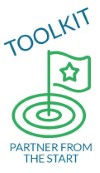These books go beyond the usual L&D texts to help you expand your role and try new ideas.
As an Amazon Associate I earn from qualifying purchases.
Performance consulting, needs analysis
 The Business of Corporate Learning: Insights from Practice by Shlomo Ben-Hur. A high-level look at how L&D can show its value to the organization, with everything from a mission statement to a focus on creating and sustaining behavioral change, not just knowledge transfer. I would have preferred more examples but the book makes important points that can profoundly change how you approach your job. The Business of Corporate Learning: Insights from Practice by Shlomo Ben-Hur. A high-level look at how L&D can show its value to the organization, with everything from a mission statement to a focus on creating and sustaining behavioral change, not just knowledge transfer. I would have preferred more examples but the book makes important points that can profoundly change how you approach your job. |
 Working Minds by Beth Crandall et al. Detailed look at how to use cognitive task analysis to break down the decision-making process that occurs in complex situations. I recommend the print version due to formatting issues in the Kindle version. Working Minds by Beth Crandall et al. Detailed look at how to use cognitive task analysis to break down the decision-making process that occurs in complex situations. I recommend the print version due to formatting issues in the Kindle version. |
 Performance Consulting by Dana Gaines Robinson and James Robinson. Tools and techniques to help you work with management to improve performance in many ways, not just as a training developer. Performance Consulting by Dana Gaines Robinson and James Robinson. Tools and techniques to help you work with management to improve performance in many ways, not just as a training developer. |
 Driving Performance Through Learning: Develop Employees through Effective Workplace Learning by Andy Lancaster. A wide-ranging look at how L&D can align with organizational goals by going beyond the "course" to embed learning in the flow of work. Driving Performance Through Learning: Develop Employees through Effective Workplace Learning by Andy Lancaster. A wide-ranging look at how L&D can align with organizational goals by going beyond the "course" to embed learning in the flow of work. |
 Capability at Work: How to Solve the Performance Puzzle by Paul Matthews. Helps you shift your mindset from order-taker to performance consultant and gives you specific steps to identify the root cause of a problem and win the support of managers. Capability at Work: How to Solve the Performance Puzzle by Paul Matthews. Helps you shift your mindset from order-taker to performance consultant and gives you specific steps to identify the root cause of a problem and win the support of managers. |
 Partner from the Start online toolkit by Cathy Moore. Start projects right by helping your clients identify the real problem with this interactive toolkit. Practice with the fictional client and follow clear steps to apply the process to your job for immediate change. Partner from the Start online toolkit by Cathy Moore. Start projects right by helping your clients identify the real problem with this interactive toolkit. Practice with the fictional client and follow clear steps to apply the process to your job for immediate change. |
 Power Questions: Build Relationships, Win New Business, and Influence Others by Andrew Sobel and Jerold Panas. Specific, immediately useful questions that will help you identify the root cause of a problem, understand what stakeholders really want, and gain the insights that will help you make a real impact on your organization. Power Questions: Build Relationships, Win New Business, and Influence Others by Andrew Sobel and Jerold Panas. Specific, immediately useful questions that will help you identify the root cause of a problem, understand what stakeholders really want, and gain the insights that will help you make a real impact on your organization. |
Alternatives, adjuncts to "training"
 Show Your Work by Jane Bozarth. Readable book packed with examples showing how L&D can break down silos by encouraging people to show each other how they work, especially sharing works in progress. Show Your Work by Jane Bozarth. Readable book packed with examples showing how L&D can break down silos by encouraging people to show each other how they work, especially sharing works in progress. |
  Job Aids and Performance Support by Allison Rossett and Lisa Schafer. Describes the many types of job aids and how they can be used, with inspiring examples. Job Aids and Performance Support by Allison Rossett and Lisa Schafer. Describes the many types of job aids and how they can be used, with inspiring examples. |
Instructional design
 Michael Allen's Guide to Elearning by Michael Allen. Paperback and Kindle. Strong, timeless ideas and arguments for abandoning the tell-then-test information dump, with examples of alternatives. Michael Allen's Guide to Elearning by Michael Allen. Paperback and Kindle. Strong, timeless ideas and arguments for abandoning the tell-then-test information dump, with examples of alternatives. |
 Make It Stick: The Science of Successful Learning by Peter C. Brown et al. Very readable summary of research showing how people learn best, debunking some long-held myths and offering better techniques to replace them. Highly recommended. Make It Stick: The Science of Successful Learning by Peter C. Brown et al. Very readable summary of research showing how people learn best, debunking some long-held myths and offering better techniques to replace them. Highly recommended. |
 Urban Myths about Learning and Education by Pedro De Bruyckere et al. Debunks or critically examines 35 common beliefs about how we learn, including learning styles, digital natives, 70-20-10, left and right brains, and "We use only 10% of our brains." The book appears to be intended for people in education but is useful for responding to our colleagues or stakeholders. It has some editing and stylistic issues that don't detract from its usefulness. Urban Myths about Learning and Education by Pedro De Bruyckere et al. Debunks or critically examines 35 common beliefs about how we learn, including learning styles, digital natives, 70-20-10, left and right brains, and "We use only 10% of our brains." The book appears to be intended for people in education but is useful for responding to our colleagues or stakeholders. It has some editing and stylistic issues that don't detract from its usefulness. |
 More Urban Myths about Learning and Education by Pedro De Bruyckere et al. Exposes additional beliefs about learning and compares them to what science actually shows. Aimed at the education world, but since many of those myths infect L&D, this book can help you combat them. More Urban Myths about Learning and Education by Pedro De Bruyckere et al. Exposes additional beliefs about learning and compares them to what science actually shows. Aimed at the education world, but since many of those myths infect L&D, this book can help you combat them. |
 Elearning and the Science of Instruction by Ruth Clark and Richard Mayer. Print and Kindle. Revised version of the classic that applies research to help identify what works in elearning. It's a useful source of citations to talk stakeholders out of extraneous bling and narration. Elearning and the Science of Instruction by Ruth Clark and Richard Mayer. Print and Kindle. Revised version of the classic that applies research to help identify what works in elearning. It's a useful source of citations to talk stakeholders out of extraneous bling and narration. |
| Design for How People Learn by Julie Dirksen. Easy-to-understand and engaging book that explains the principles behind learning, memory, and attention that help your audience learn. |
| Map It: The hands-on guide to strategic training design by Cathy Moore. Walks you through action mapping in detail, with lots of examples and ideas. For all types of training, not just elearning. |
 Your Brain at Work: Strategies for Overcoming Distraction, Regaining Focus, and Working Smarter All Day Long by David Rock. Useful, story-based summary of what neuroscience suggests about how the brain works, with tips that are applicable to training as well as to self-development. Your Brain at Work: Strategies for Overcoming Distraction, Regaining Focus, and Working Smarter All Day Long by David Rock. Useful, story-based summary of what neuroscience suggests about how the brain works, with tips that are applicable to training as well as to self-development. |
 Practice and Feedback for Deeper Learning by Patti Shank. A concise, easy-to-understand overview of evidence-based methods to help people learn for application, not regurgitation. Practice and Feedback for Deeper Learning by Patti Shank. A concise, easy-to-understand overview of evidence-based methods to help people learn for application, not regurgitation. |
Scenarios, storytelling, and comics
Evaluation
Your career
 Overcoming Underearning: A Five-Step Plan to a Richer Life by Barbara Stanny. Surveys show that women's earnings still lag behind men's in L&D. There are many reasons for this, but one of them could be that women are encouraged to believe that money is somehow bad and it's "wrong" to ask for more. This book will help you recognize and overcome that programming. Overcoming Underearning: A Five-Step Plan to a Richer Life by Barbara Stanny. Surveys show that women's earnings still lag behind men's in L&D. There are many reasons for this, but one of them could be that women are encouraged to believe that money is somehow bad and it's "wrong" to ask for more. This book will help you recognize and overcome that programming. |
 Partner from the Start online toolkit by Cathy Moore. Start projects right by helping your clients identify the real problem with this interactive toolkit. Practice with the fictional client and follow clear steps to apply the process to your job for immediate change.
Partner from the Start online toolkit by Cathy Moore. Start projects right by helping your clients identify the real problem with this interactive toolkit. Practice with the fictional client and follow clear steps to apply the process to your job for immediate change. Scenario Design toolkit by Cathy Moore. Walks you through designing decision-making scenarios for any format, elearning or live. Practice with the fictional client; interactive worksheets help you make the tricky decisions. Use it as a reference for all your projects.
Scenario Design toolkit by Cathy Moore. Walks you through designing decision-making scenarios for any format, elearning or live. Practice with the fictional client; interactive worksheets help you make the tricky decisions. Use it as a reference for all your projects.